Every week, AGENDA goes in search of the sound and vision of Brussels. This week, we’re doing that from behind the pair of egg-shaped glasses of Ben Gijsemans’s hero with a heart for art, Hubert.
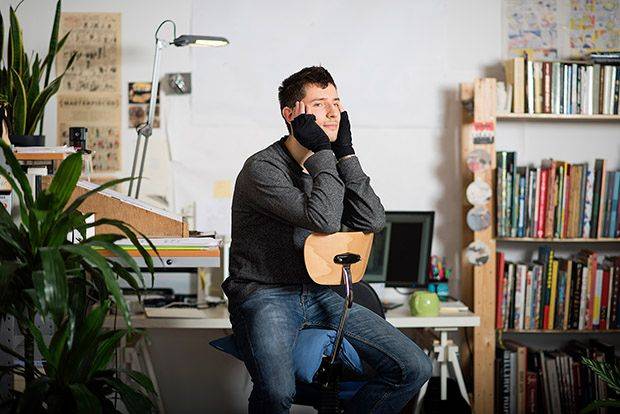
Wunderkammer: Ben Gijsemans
So much for slow-paced living. Hubert Luyten, the withdrawn man who in Ben Gijsemans’s first comic strip prefers to observe the world silently and inconspicuously from behind a pair of sad, egg-shaped glasses, is currently taking the world by storm. With a series of translations into German, French, and English and an exhibition at the Royal Museums of Fine Arts of Belgium – the place where Hubert spends every weekend escaping the emptiness of his lonely days by quenching his thirst at The Fountain of Inspiration by Constant Montald – the timid hero with a heart for art is getting more attention than he ever could have imagined. Entirely justified, we must say, because Ben Gijsemans entices the paper to tell a stunningly beautiful, precious story that does nothing less than hesitatingly, slowly but surely bring together beauty, art, and life. Exploring great themes in small, fragmented steps, Hubert ignores the zeitgeist and aims for timelessness. Ben Gijsemans: “Michael Haneke, one of my favourite directors, once said that he doesn’t believe in films that only treat one theme and can be summarised in one synopsis. I agree completely. Either you tell a story or you give your readers an experience. I have always been more interested in the second.”
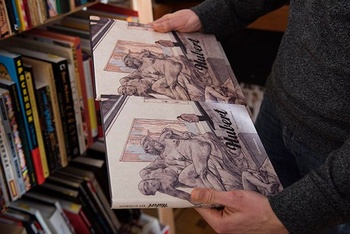
The silent power of Hubert is that Ben Gijsemans does what he says, choosing the form that his narrative incites. In his apartment, Hubert starts recreating what he has seen, but only ever in fractions, by extracting details of female curvature from the paintings of artists like Montald, Quinten Metsys, and Manet. The space is likewise limited; you never see much more than details of Hubert’s apartment, staircase, car, and the museum itself. And you explore them at a shuffling pace, a tentative approach that produces extreme focus and precision in poetic expressiveness, and which allows Ben Gijsemans to make the act of looking (of Hubert and the reader) as such – as mild voyeurism, intrusive act, appeal, command, invitation to intimacy, ritual… – his subject.
PUSH ESCAPE TO EXIT
Ben Gijsemans: “Art is first and foremost about looking, intense looking. Hubert surrenders to the paintings, and his passion is mine. I have always been fascinated by painting. I continued to explore it while I was studying animated film in Ghent, even in my graduation project. I long dreamt of becoming a painter. When I started writing the book, I had only just moved to Brussels to do a Master’s in comic strips at Sint-Lukas. Reflecting on it afterwards, you could say that I sort of used Hubert as an excuse to spend a lot of time at the museum.”
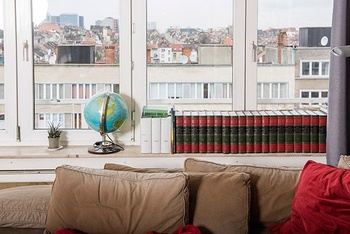
That seeped through to the story. “Hubert actually started out as a visual retelling of a 1970s novel by Marnix Gijsen, De kroeg van groot verdriet, about a man who heads to the Pink Poodle Bar in New York every night at 11 pm, to listen to the life stories of the other regulars at the bar and recount his own. Nothing more, nothing less. A very simple concept that nonetheless makes for very strong characters. I wanted Hubert to be just as strong a portrait. Spending all my time on a bench at the Royal Museums of Fine Arts, I noticed my character slowly turned into an art lover, and the bar became a museum.”
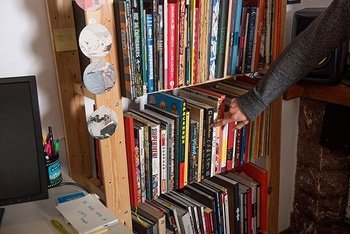
Hubert finds solace in his escapism. “Escapism is a term with a lot of negative connotations, but I thought it would be interesting to contradict that idea. Escapism has always helped me, it is a way of escaping the here and now in a created world. In Hubert, I wanted to create a character with an atypical social environment that actually works perfectly because it allows him to live out his passion for painting. To him, this is a way of life and thus also a way to be happy. This is contrary to what your average person would think, but there are introverted people like Hubert who are actually better off on their own. I am not as extreme as him, and I respect a certain balance, but I can’t deny that I also enjoy being alone and that I sometimes need to take time for myself.”
WHERE’S YOUR HEAD AT?
Besides the major presence of painting, it is also Ben Gijsemans’s refreshing cinematic perspective that makes Hubert an enrichment of the graphic novel medium. “The book is partly the result of my knowledge and insight as a filmmaker and partly the result of my lack of knowledge of the comic strip medium. I still think in terms of camera angle, shots, scenes, and sequences. The reason I ventured into the comics medium, had to do with the fact that making movies is nearly impossible. During my animation studies, I worked two years on an experimental 12-minute short. After graduation, I felt the need to make something more accessible, more narrative, and longer. I have been drawing all my life, so comic strips were the logical path to follow.”
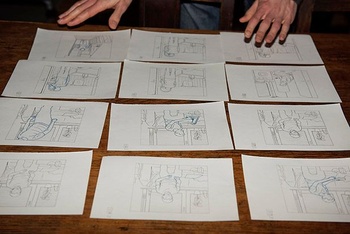
Ben Gijsemans employs his camera at a speed that facilitates focus and depth, and uncovers a keen eye for the beauty of the unspectacular, those seemingly insignificant movements of life. “Hubert is an exercise of observation. So yes, it focuses on the small things, but I don’t think the pace is that slow. I actually believe everyone and everything else are going too fast. [Laughs] That is why I read very few comic strips. Traditional comic strip authors often work like mad just to make the story move forward, and they try desperately to propel their characters towards the end of the story while that story itself clearly resists that movement. Tintin is an exception. Hergé allows for more space, allows to escape from that rigid structure."
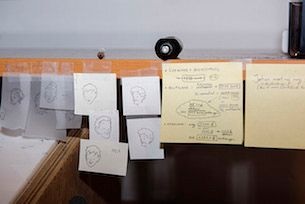
"I find that a slower pace shows more understanding for your characters and gives the reader the time to get into their heads. In Hubert, that is where the action takes place. The space between the panels is what interests me. That is what makes it all the more real.”
SILENT SUPERHERO
“In my head, Hubert is the first part of a trilogy about characters whose escapism makes their own lives manageable. The second part, Aaron, which I’m working on right now, will be about a student who escapes from his provincial drudgery through superhero comics. There isn’t really an autobiographical aspect here, I have much more in common with Hubert.”
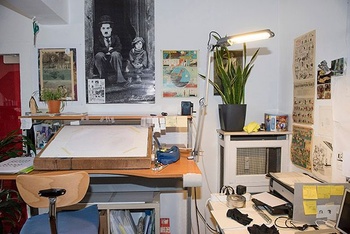
Ben Gijsemans’s heroes have no supernatural powers, they simply live on his bookshelves – Chris Ware, Olivier Schrauwen, Simon Hanselmann, Brecht Evens, Jeroen Janssen, Henry Darger, and Cyril Pedrosa, among many others – and decorate the wall above his light box. “At the moment I have Winsor McCay, Joost Swarte, and Charlie Chaplin to look at. Chaplin is an enduring hero. His films may not have the most complex narratives, but if like him you rely completely on visual storytelling, you have to come up with very inventive solutions. His dedication – he could do sixty takes of one banal joke – and the creativity within it are boundless, and they trigger me to be just as inventive in what I do.”
Photos © Ivan Put
Borough: Schaarbeek/Schaerbeek
Books: Hubert: Oogachtend (NL), 2014, Dargaud (FR), Jonathan Cape (EN), Jacoby & Stuart (DE), 2016
Exhibition: “Hubert”: > 17/4, Royal Museums of Fine Arts, www.fine-arts-museum.be
Info: www.bengijsemans.com
Wunderkammer
Read more about: Expo, Wunderkammer
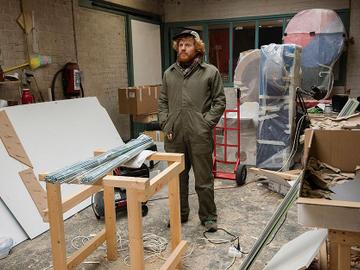

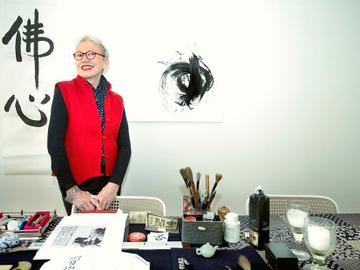
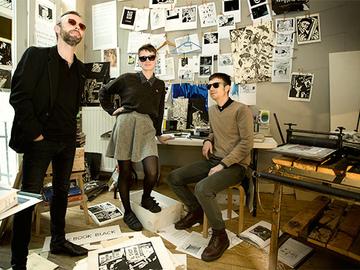
Fijn dat je wil reageren. Wie reageert, gaat akkoord met onze huisregels. Hoe reageren via Disqus? Een woordje uitleg.